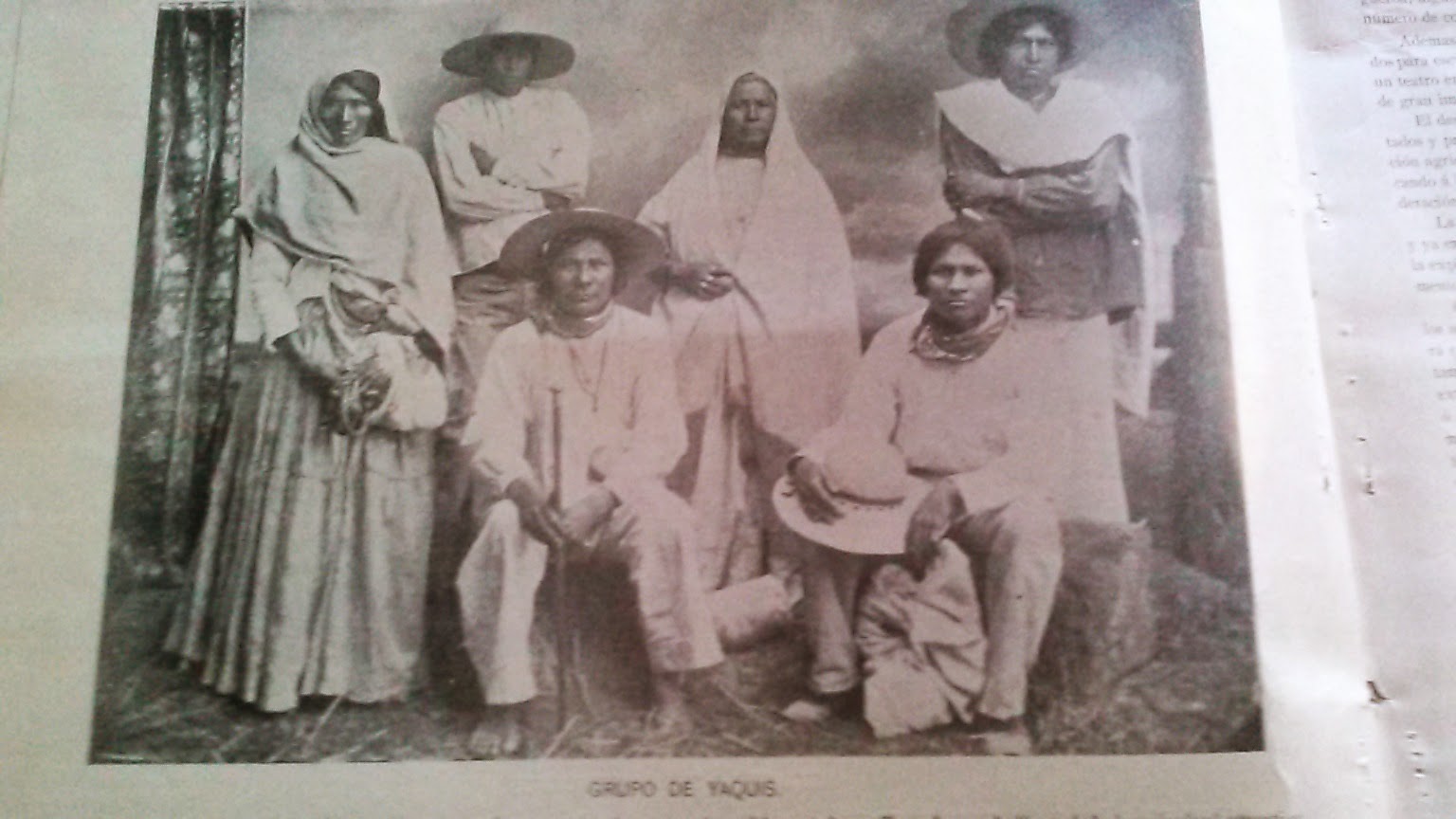Cleaning out my basement on a rainy weekend yielded this 1897 Sonora Illustrado:
The "general resume" of Sonora is a used bookstore find I made after 6 months working near Cobachi.
The book is written in both Spanish and English:
"This review of the State of Sonora, resume of its resources and its advantages is given to the public in all candor. There has been nothing overstated, nor has there been any attempt to boom Sonora beyond what its merits justify. On this it can well afford to stand."
I am not quite sure what the arrow is pointing to in this photograph of La Colorada, near Cobachi, Sonora or what it has to do with "booming" Sonora:
Nor am I exactly sure how these Yaqui Indians fit into the unboomed Sonora history:
Lots of ardor. . .but not a single "amazing" or "awesome."
This Primer of Oil Well Drilling, published in 1951, was used in our late 1970's mud-logging class:
The entire volume is quite informative, outdated, and amusing; this is one of my favorite pages:
The size of this drill bit is most impressive (but not amazing or awesome ;-)):
Yes, now that I'm done with the drill bit (ha ha), time to wrap things up, sniff things out:
put a few ornaments on the Christmas tree:
Has anyone else here at PEOTS used their nose near a shale shaker? Seen a shale shaker used to shake the cuttings as they come out of the hole? Grabbing a pail full of those muddy cuttings at 3 a. m. is certainly a highlight of sitting oil and gas wells.
Here are oil and gas discoveries as of 1951:
And, for comparison, the Wikipedia oil reserves map for 2013:
It takes a whole bunch of drilling people to make a rig operation successful:
And, lastly, a drill bit that sits on my hearth:
But, I wouldn't want to bore you. . .
Oh yes, the AWESOME quiz from, of course, brainFALL:
Posting from 82 plus degrees in Denver (still swimming outside),
Steph
Atlas (see discussion below)
Caryatid (see discussion below)
And one more October water picture:
And for Lego Joe:



















It's a shame that drill bit photo is in black-and-white. Otherwise, it might help illustrate how healthy drilling is for us.
ReplyDelete"Pinkwashing."
DeleteSteph,
ReplyDeleteThe red Sonoma book reminds me of the transliterated Greek/English New Testament that was my constant companion during grad school.
“A Primer of Oilwell Drilling…” Duh! After drilling, the first thing ya gotta do is “prime” the pump, am I right?
Don’t confuse this book with the later “A Primer in Orwell Drilling,” published in 1984.
I would not nudge nose anywhere near your shale shaker unless they make your shale shaker without using sharp razory blades.
LegoMudLogger
Lego, I sure love the look and feel and smell of old books like your Greek-English text and the Sonoran book. You don't get that with a Kindle.
DeleteAnd real l e t t e r s.
DeleteWhole lotta shaking going on, Lego, here.
ReplyDeleteMany prime questions, ribs, numbers, oil wells
abound, most assuredly.
Word (Prime of Miss Jean Brodie) Woman
And even more shaking yesterday.
DeleteHappy Ada Lovelace Day!
ReplyDeleteSome days A Word A Day (wordsmith.org) makes my day:
ReplyDeleteAtlas:
MEANING:
noun:
1. A person who supports a great burden.
2. A book of maps, charts, tables, plates, etc.
3. The top vertebra of the backbone, which supports the skull.
4. A size of drawing paper 26x33 or 26x34 inches.
5. An architectural column in the shape of a man. (Plural: atlantes. Another word for this is telamon. The female equivalent is caryatid.)
ETYMOLOGY:
After Atlas, a Titan in Greek mythology, who was condemned by Zeus to support the heavens. A book of maps is called an atlas because early books of this kind depicted Atlas on the cover holding the earth on his shoulders. Earliest documented use: 1589.
... or John Glenn's booster, he shrugged.
Delete:-)
DeleteTwo thoughts/questions:
Interesting that the plural of atlas is atlantes.
Why do the men building holders (atlantes) strain so much when the women building holders (caryatids) just use elaborately plaited hair to hold the buildings up so effortlessly? (see images added above)
I believe I used to know aseismic creep.
ReplyDeleteI suppose we all used to know creeps.
DeleteI still know one or two. But, less and less. . .
DeleteElk watching in CO
ReplyDeleteSheesh! Give 'em some privacy! (I actually heard elk bugling in Grand Teton last month.)
DeleteEerie sound, eh?
DeleteI believe that head elk is Lawrence ;-).
Just 2 days before Comet Siding Spring crashes into the vicinity of Mars!
ReplyDelete(Named for Australia's Siding Spring Observatory, just down the road from the Parkes Observatory, star of the delightful The Dish.)
So many crashings, so little time.
DeleteLooking forward to watching The Dish.
DeleteIs a goose in Australia double down under?
COPPER FOAM
ReplyDeleteThis is a livestream about the Galapagos going on now until 9 p.m. EST:
ReplyDeletebit.ly/BirdTalks
Isla Daphne, Finches, Blue-footed Boobies, etc. from Cornell Ornithology.